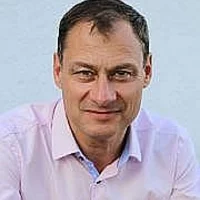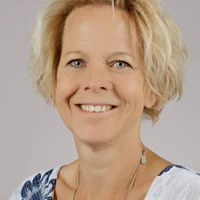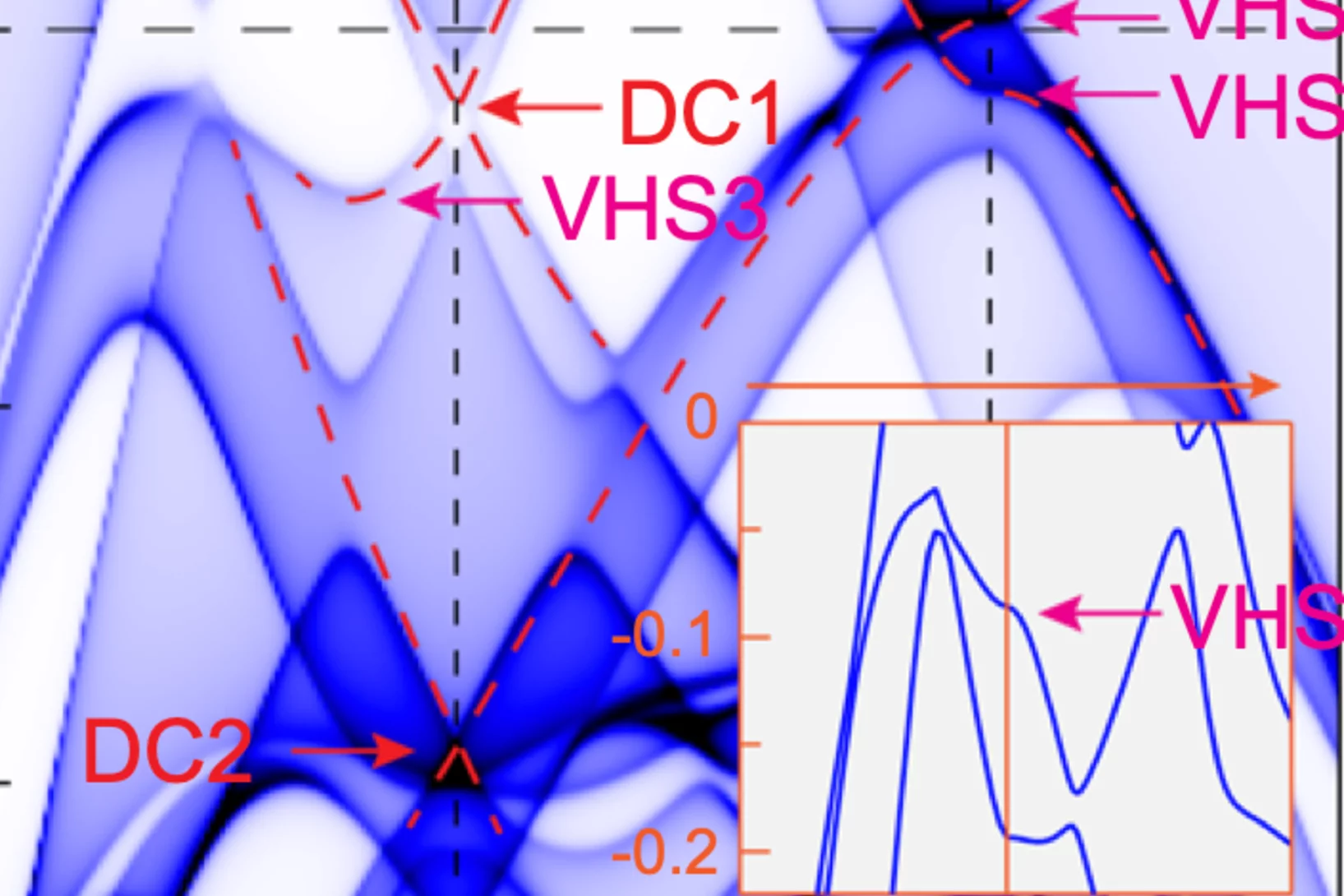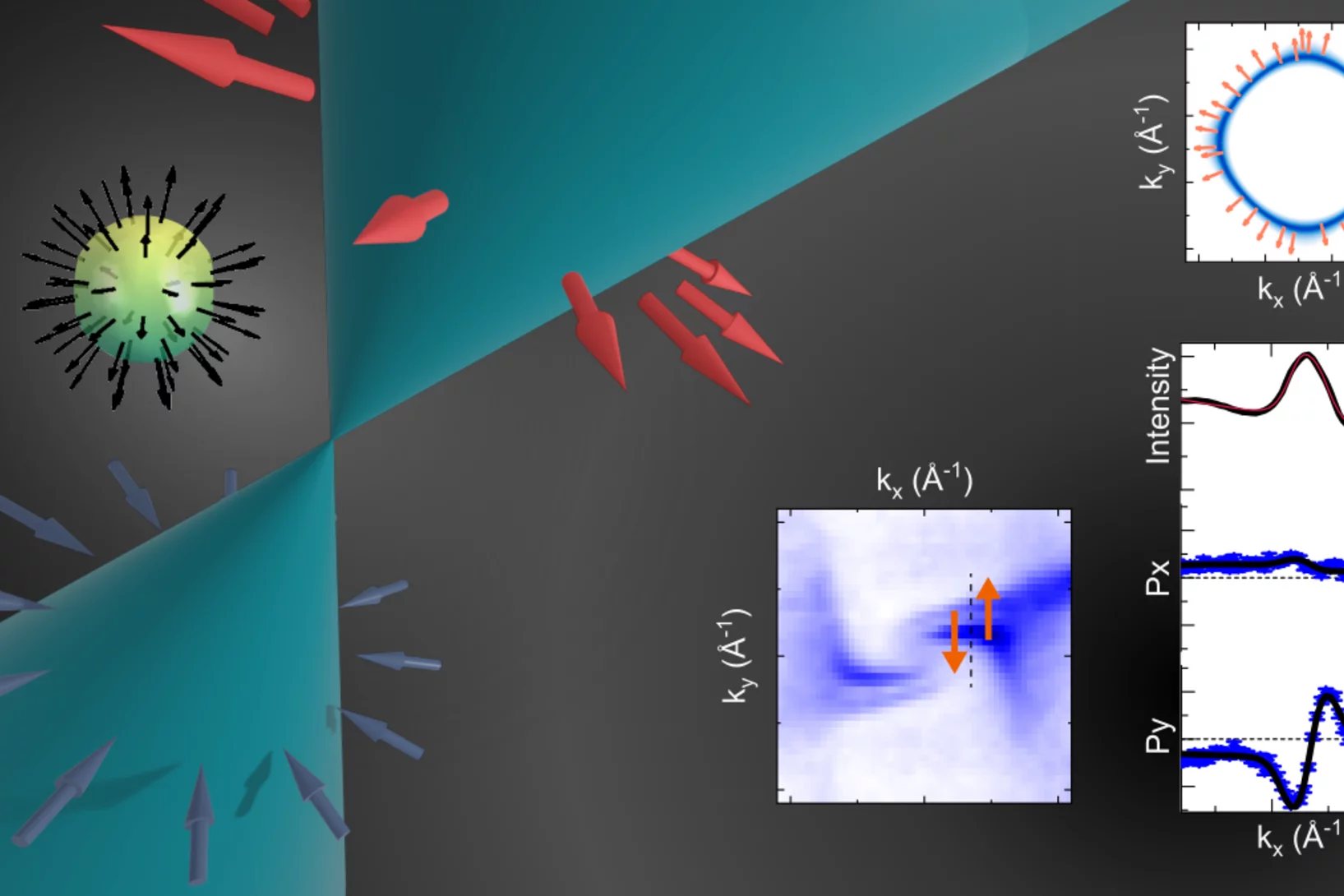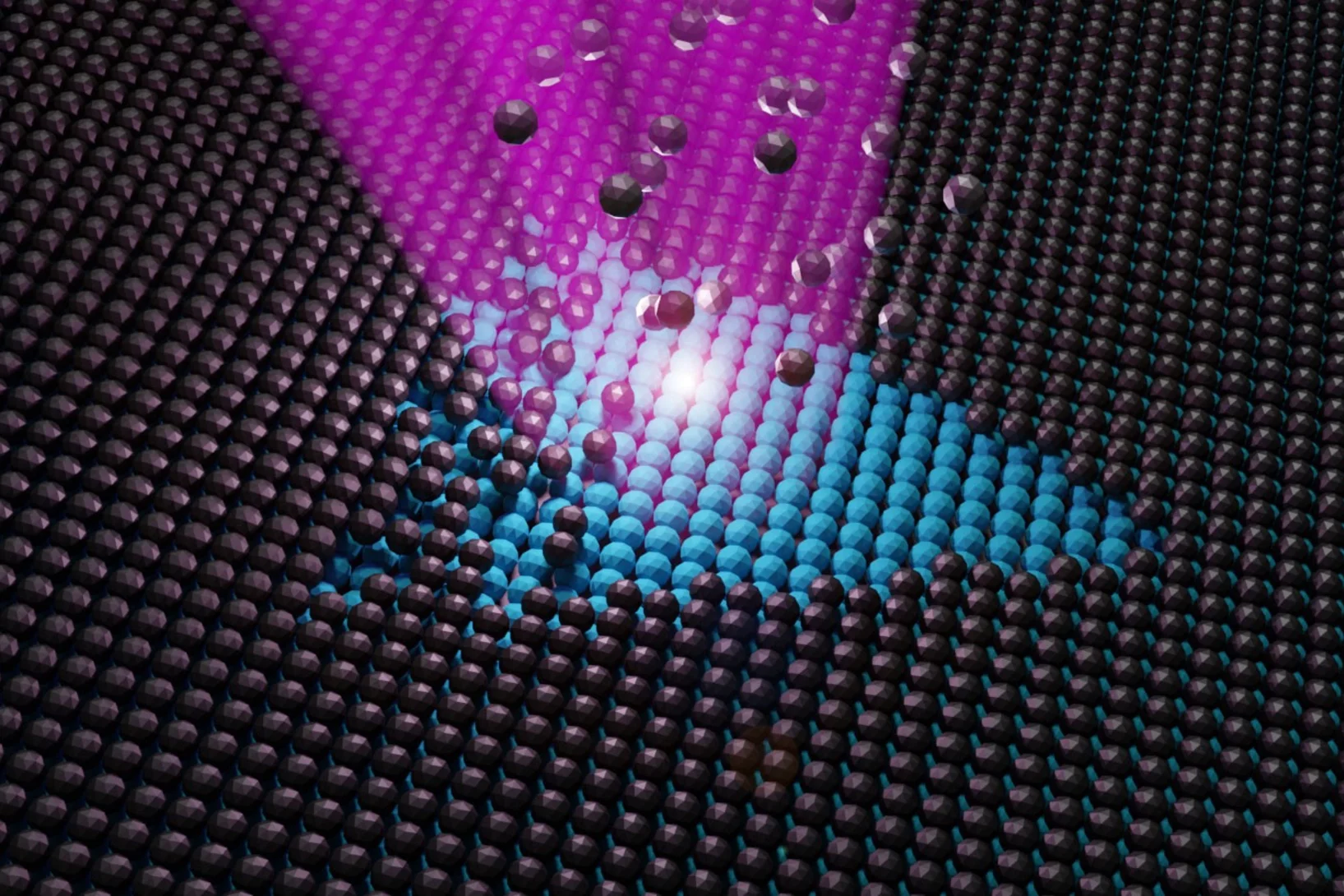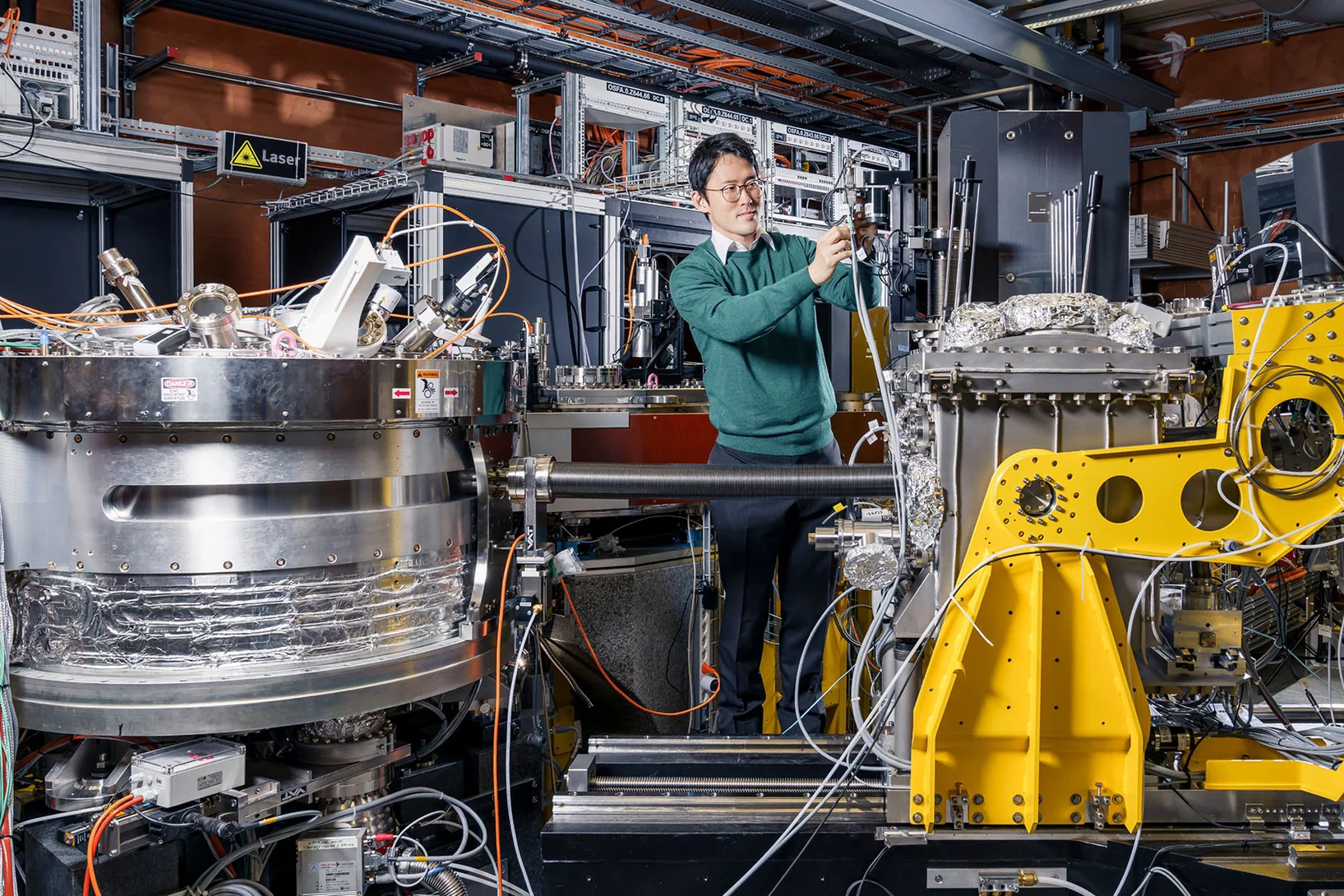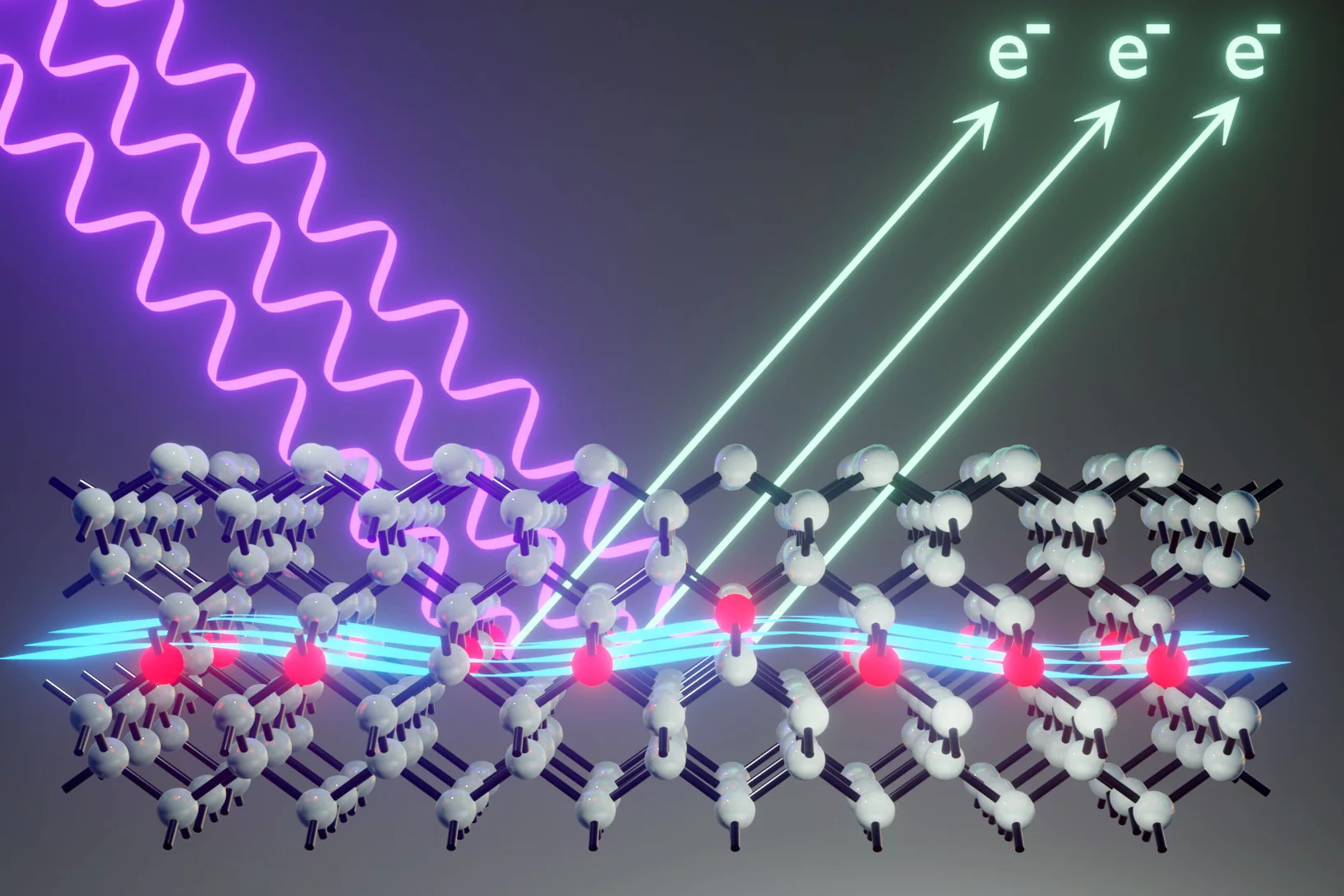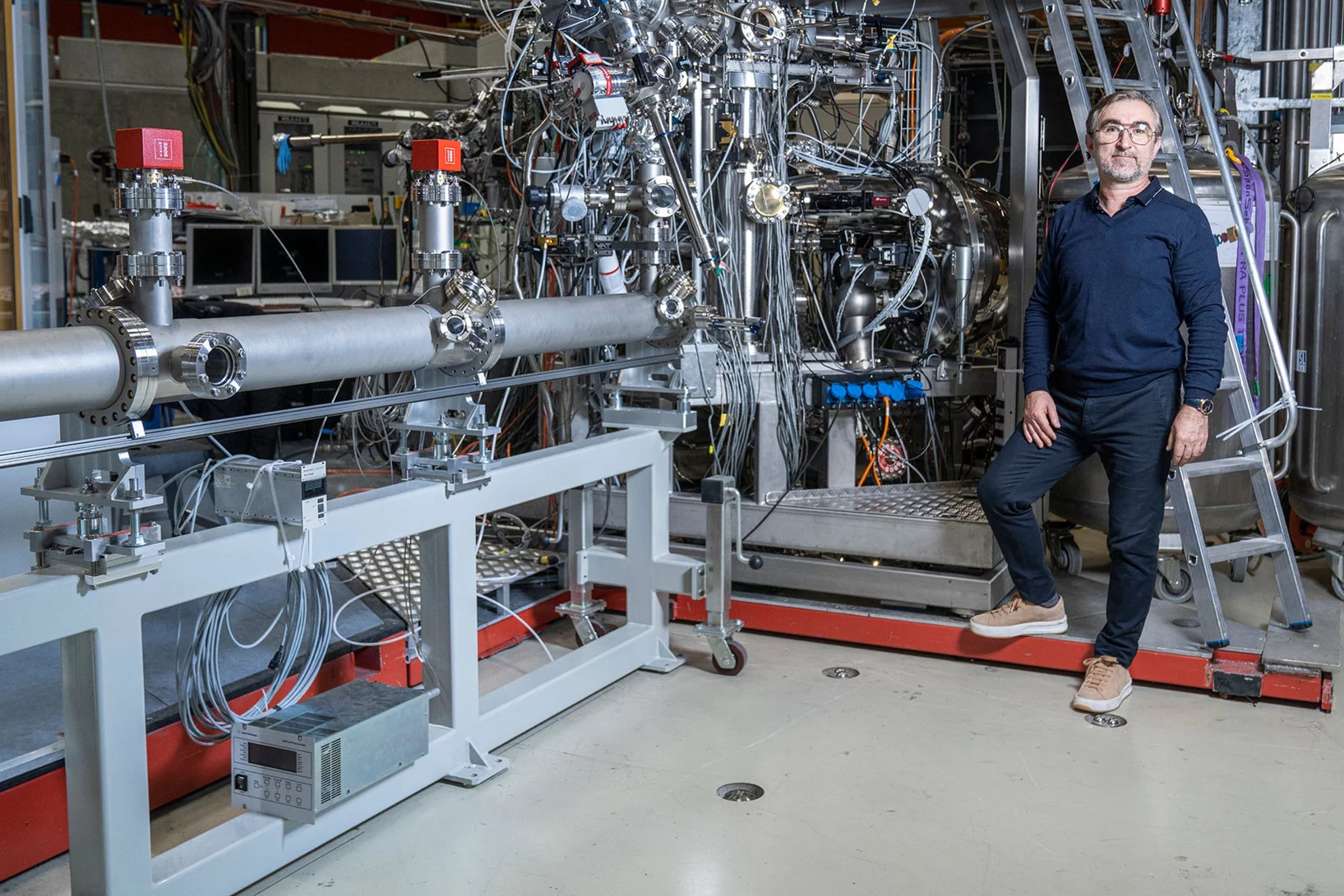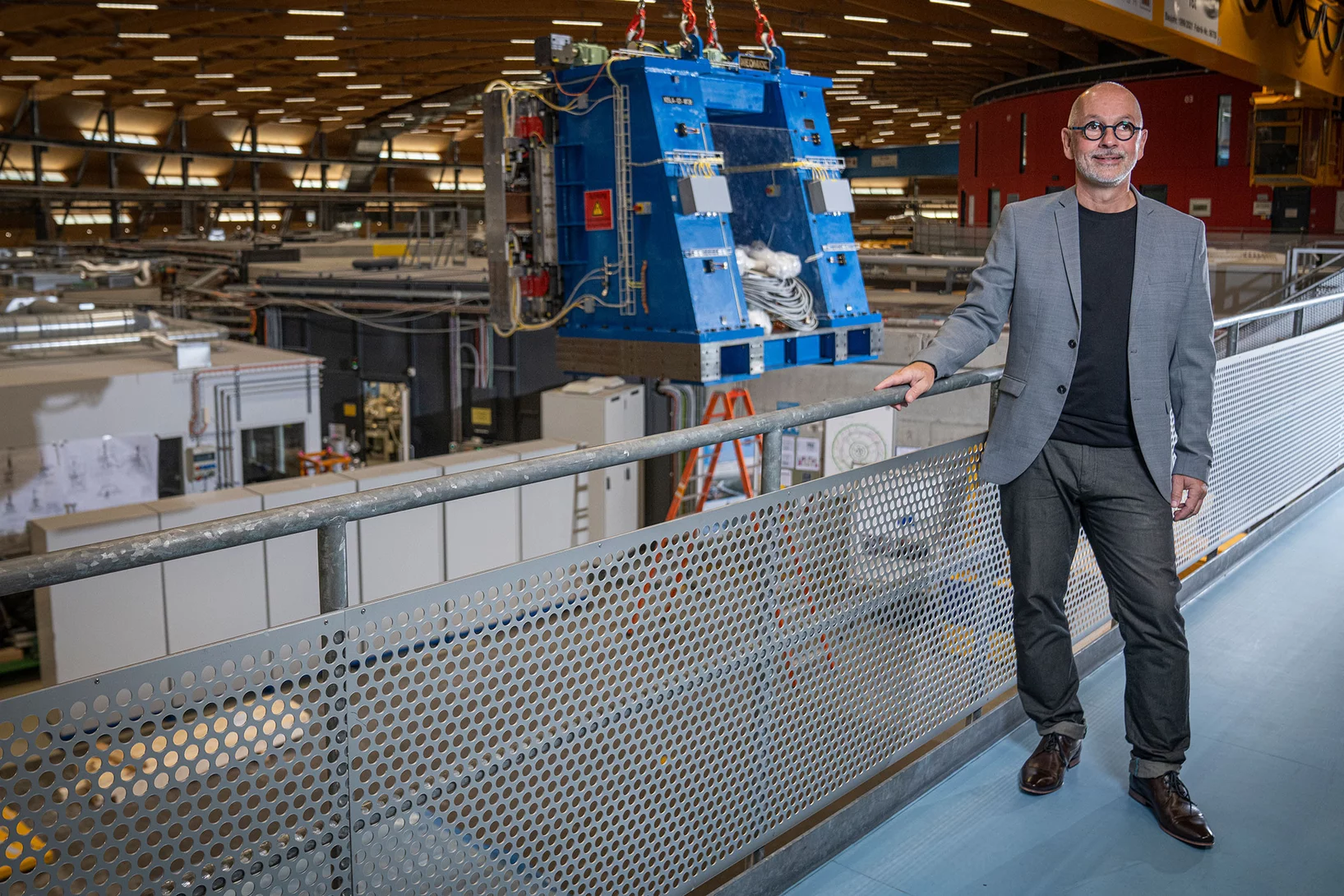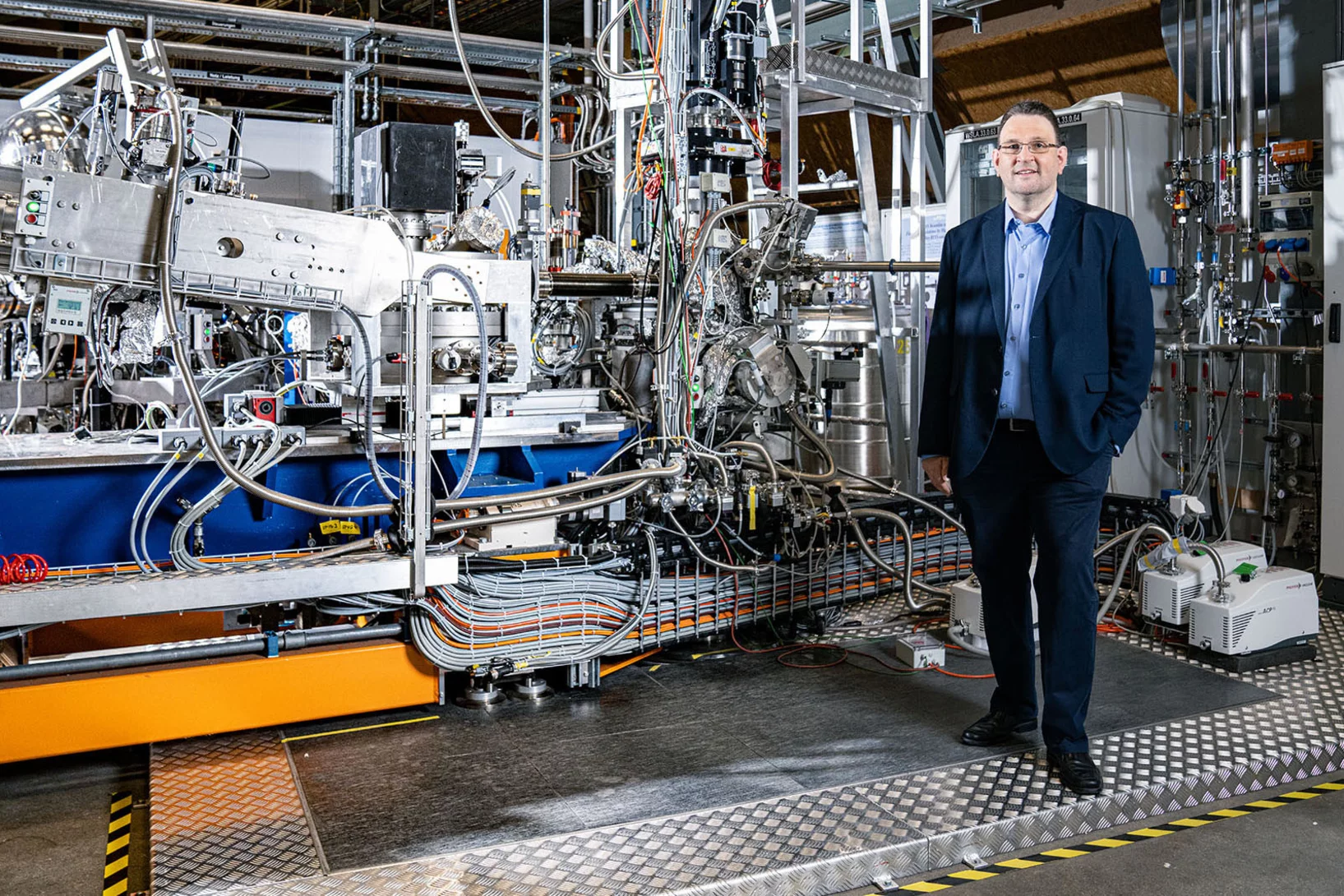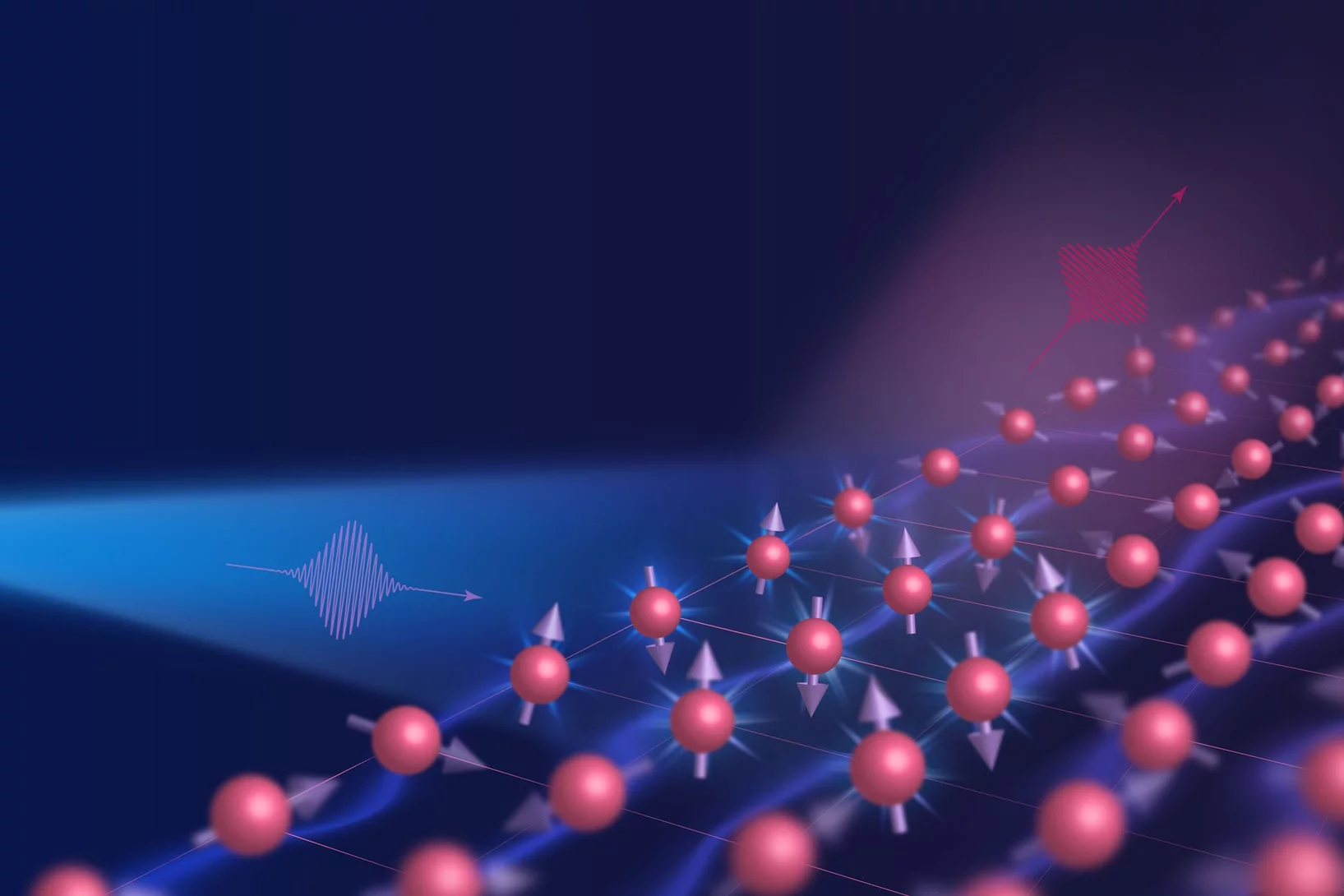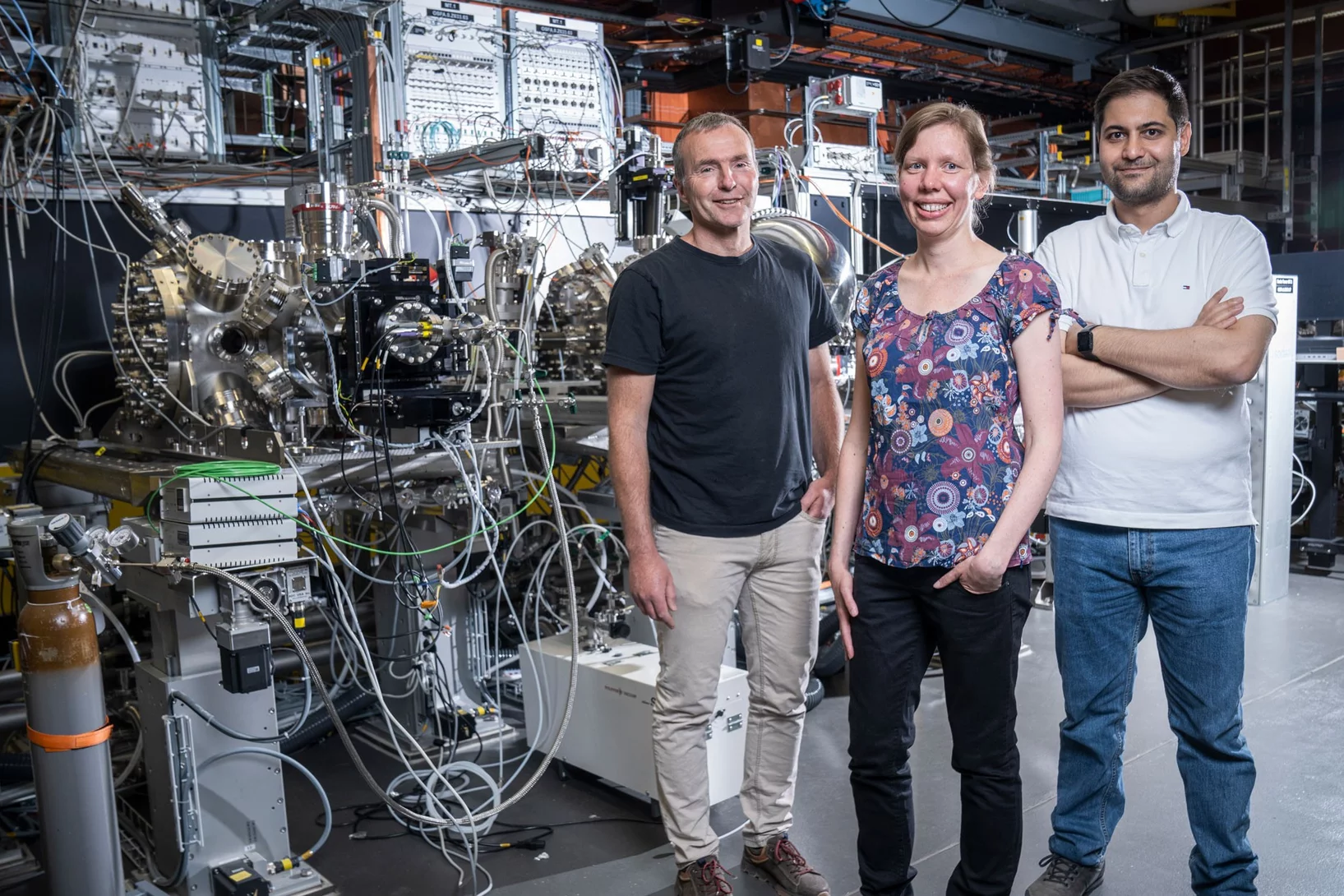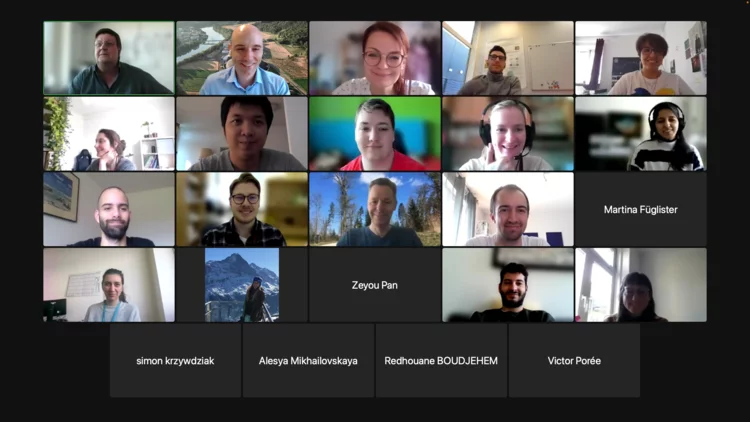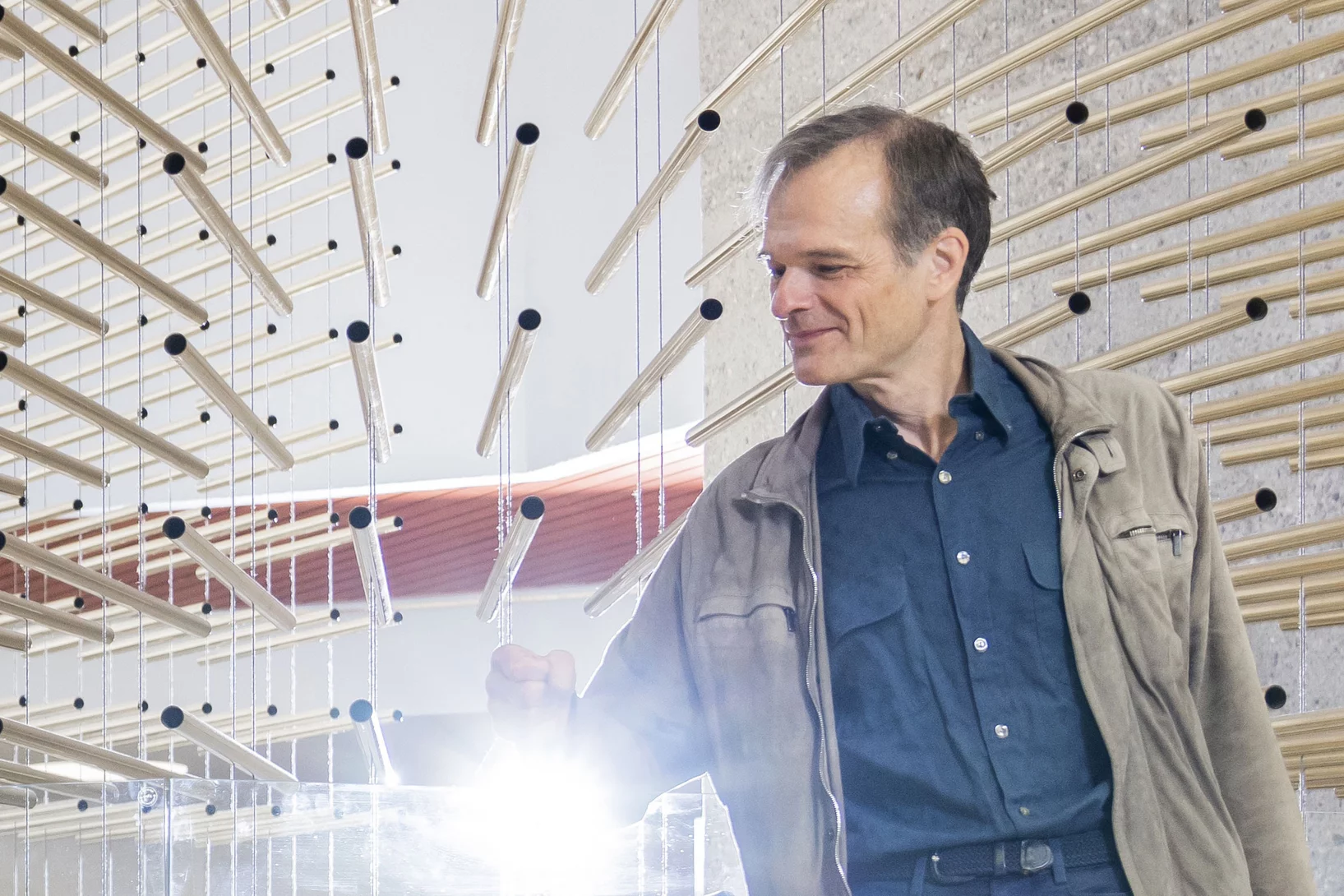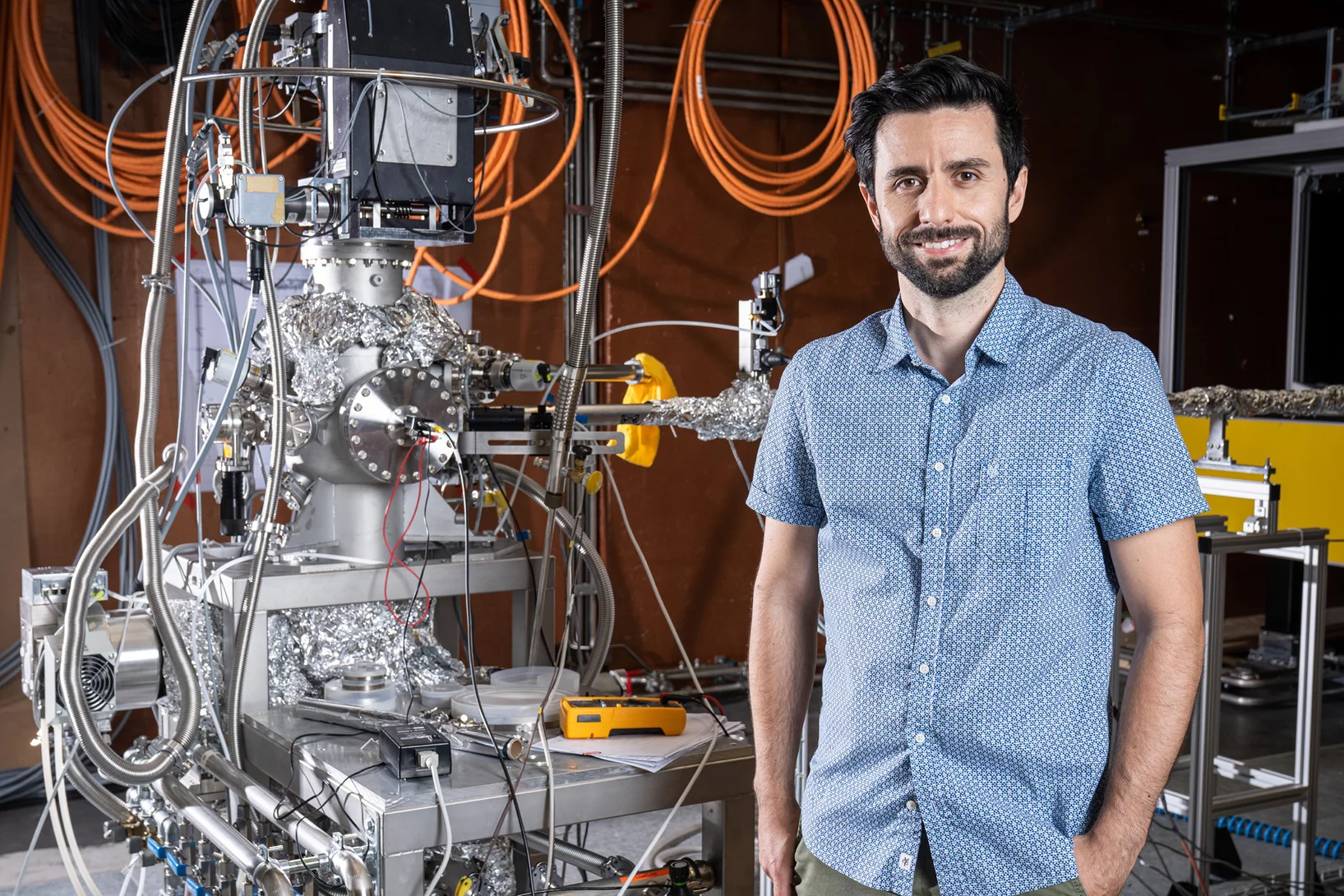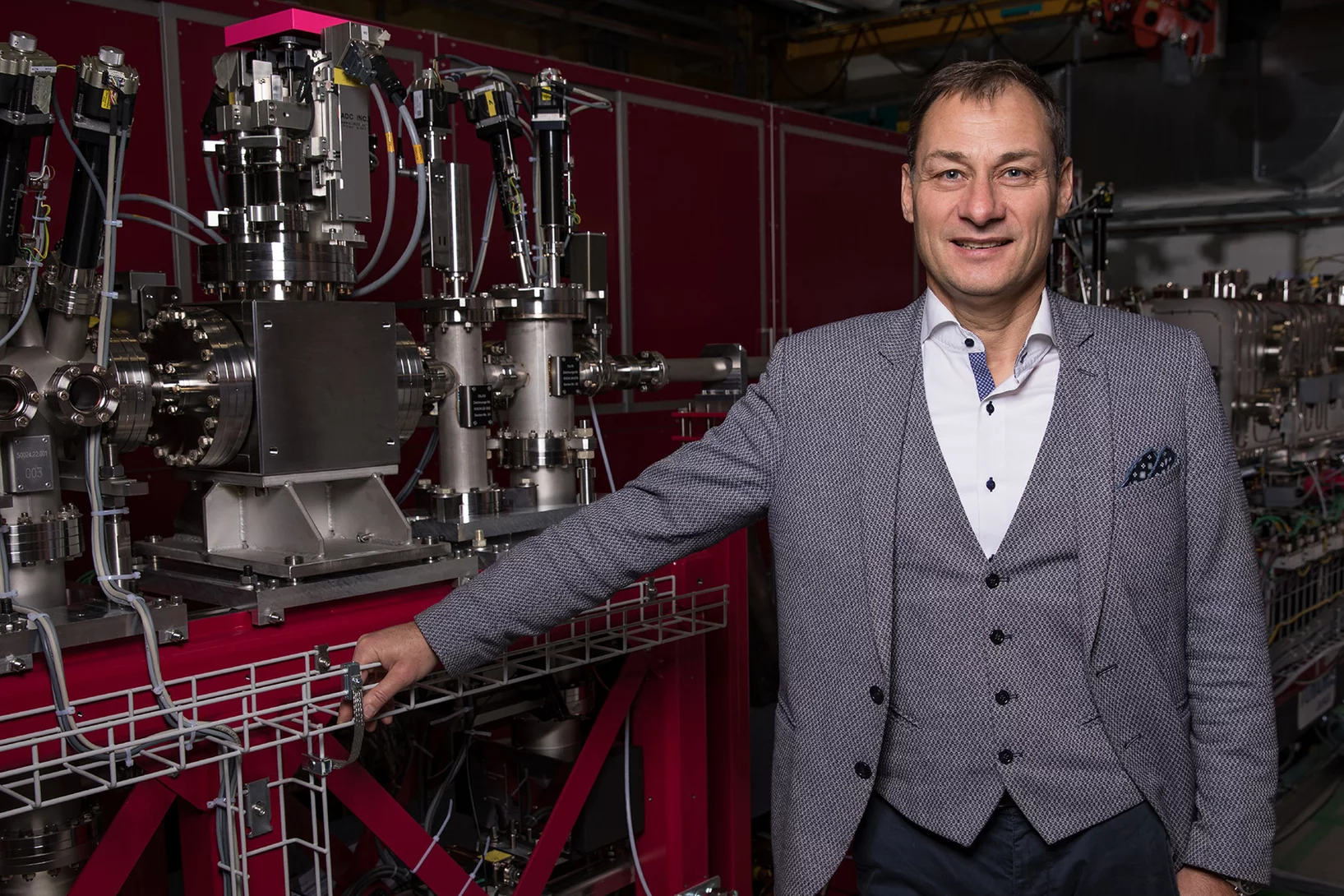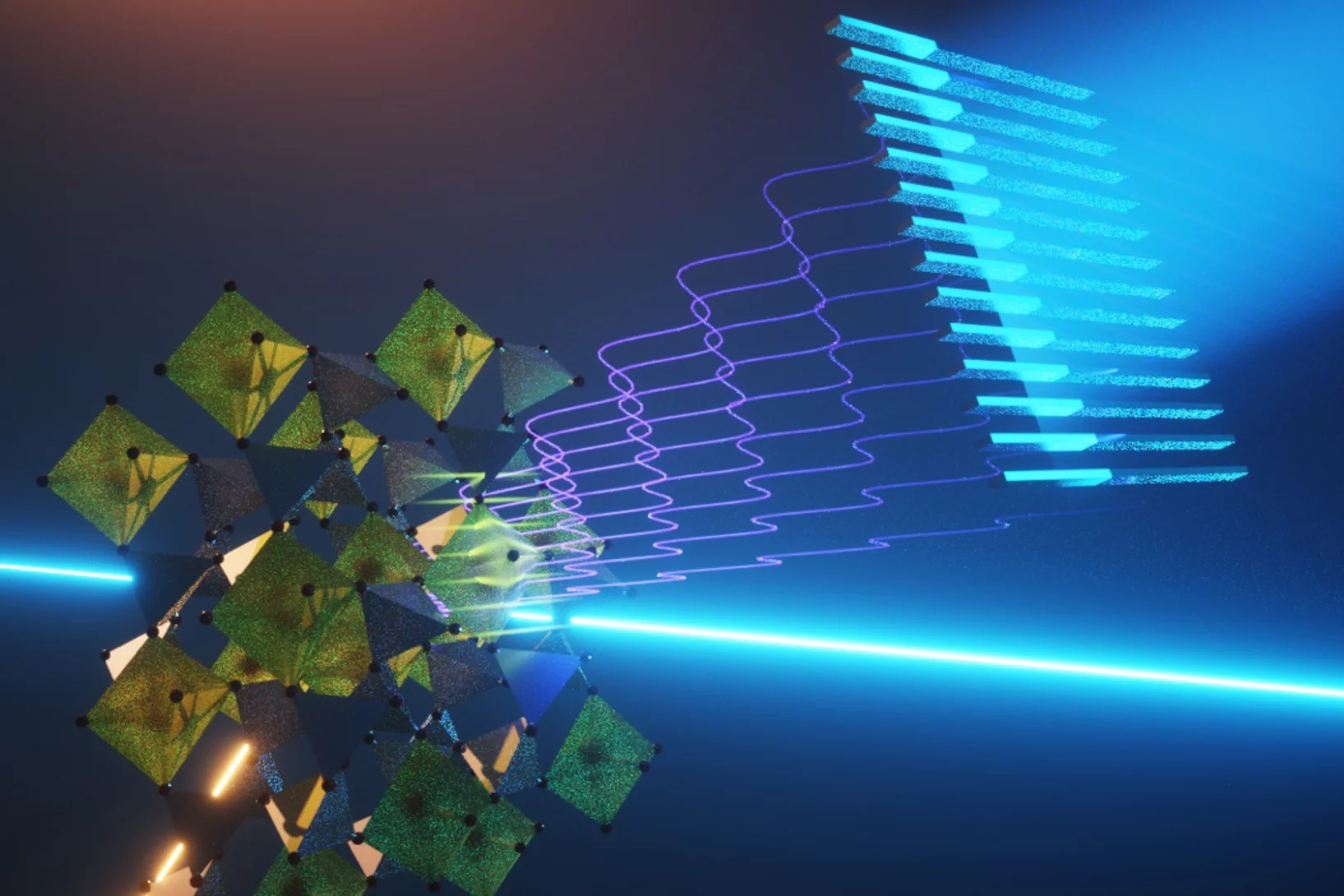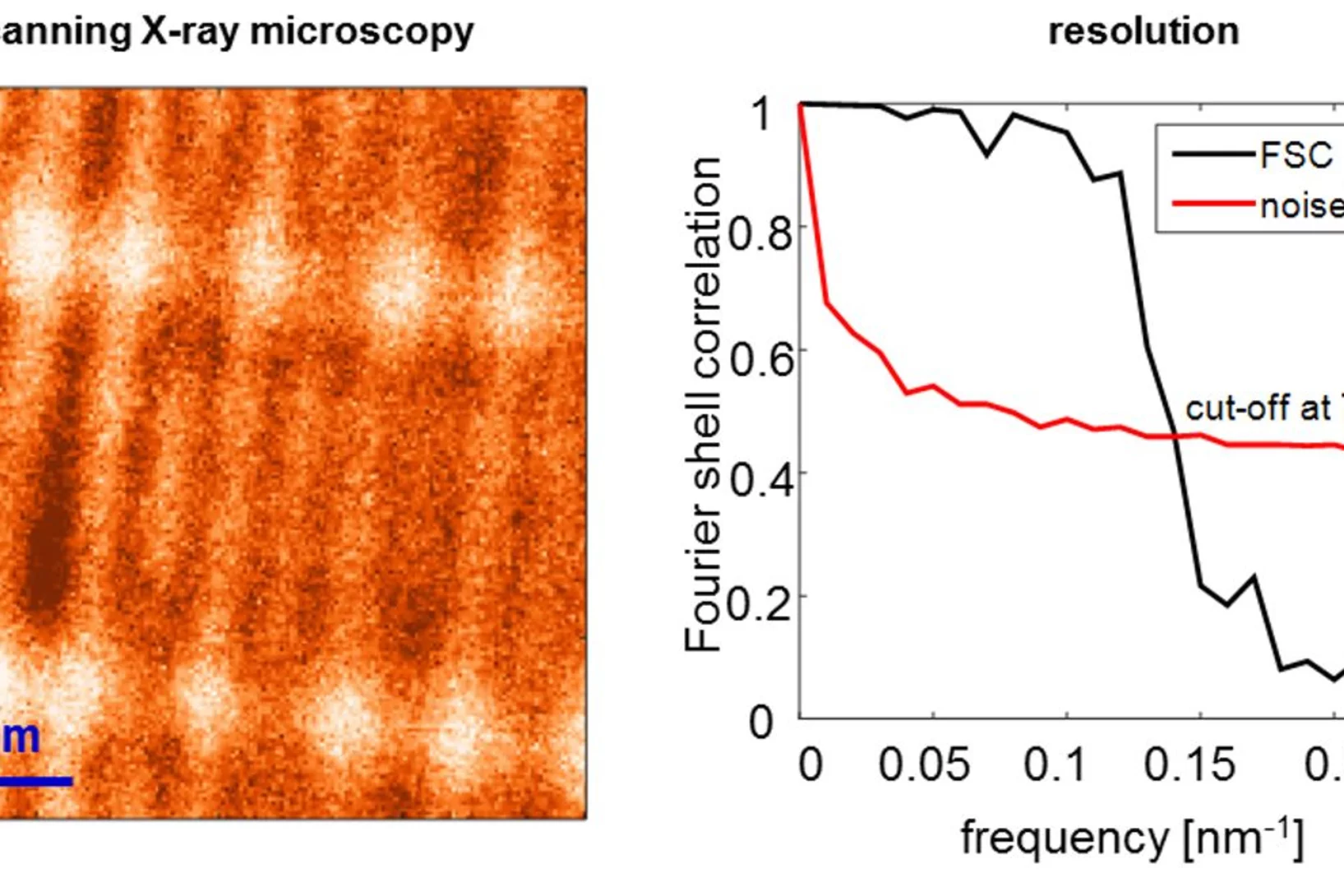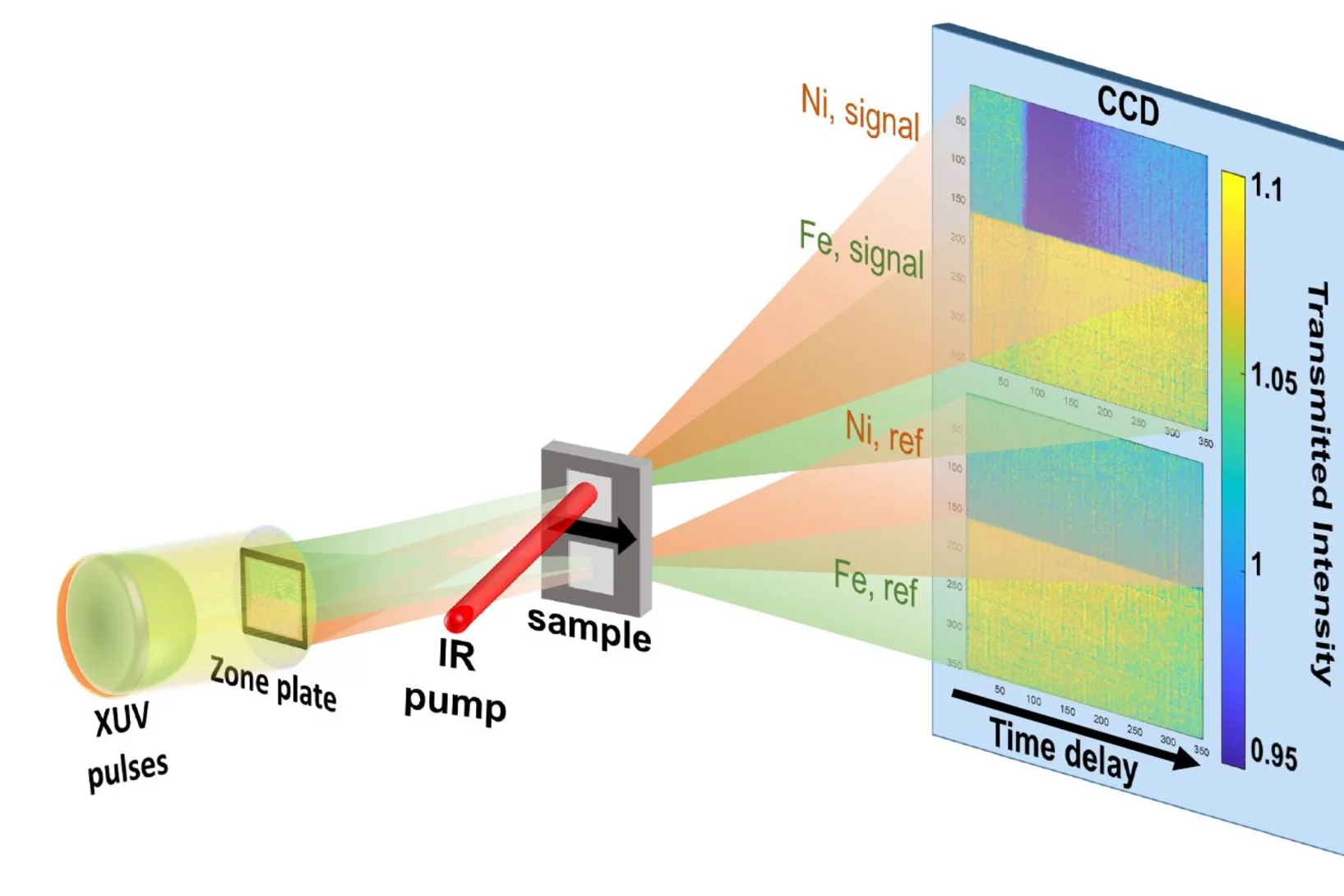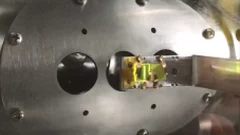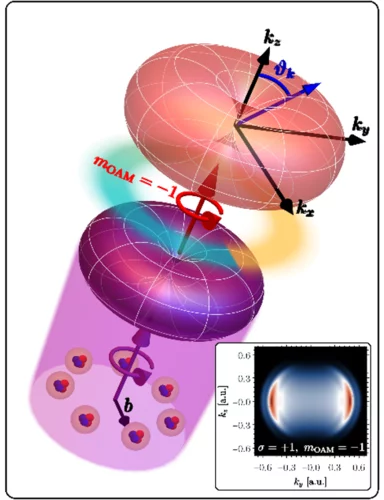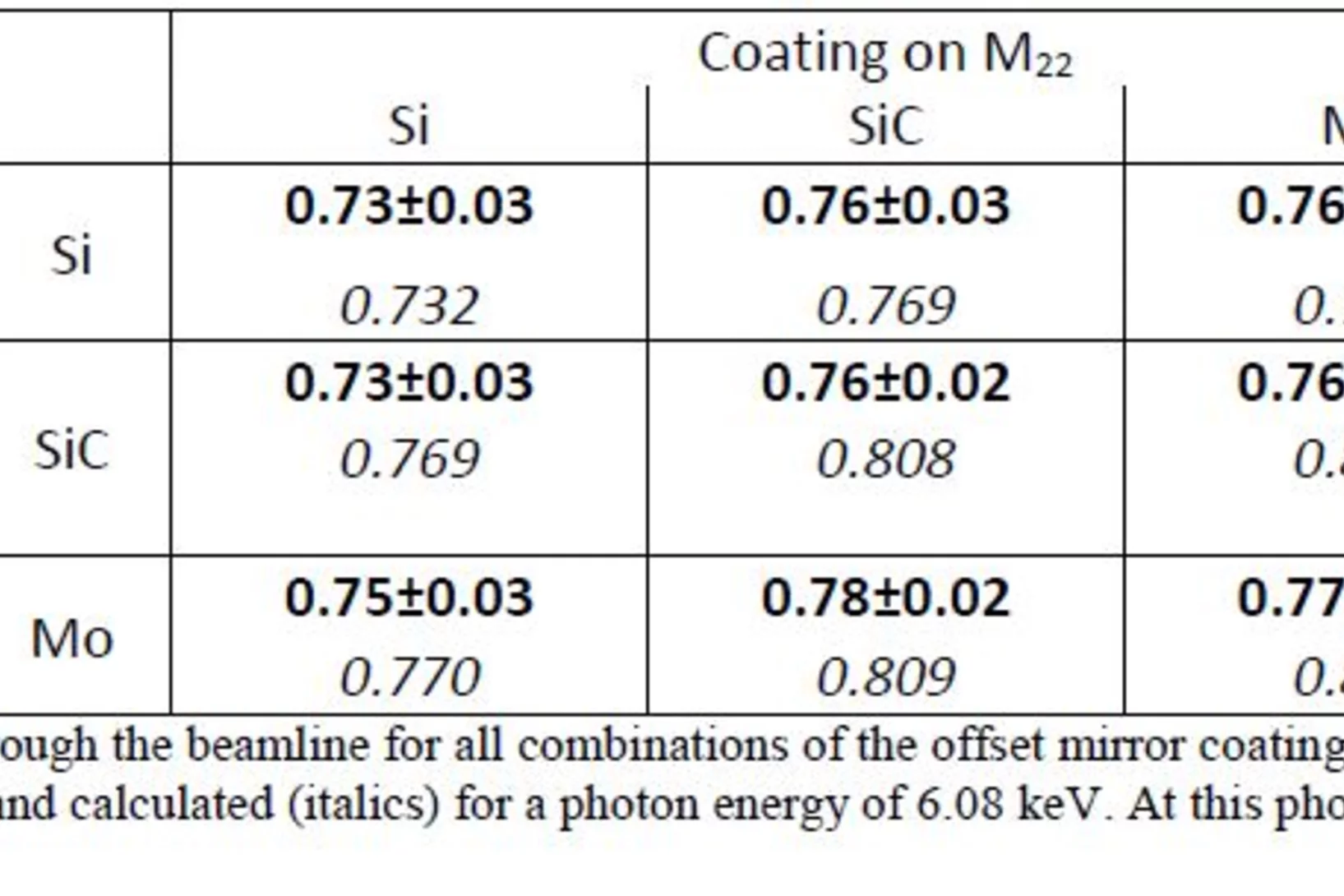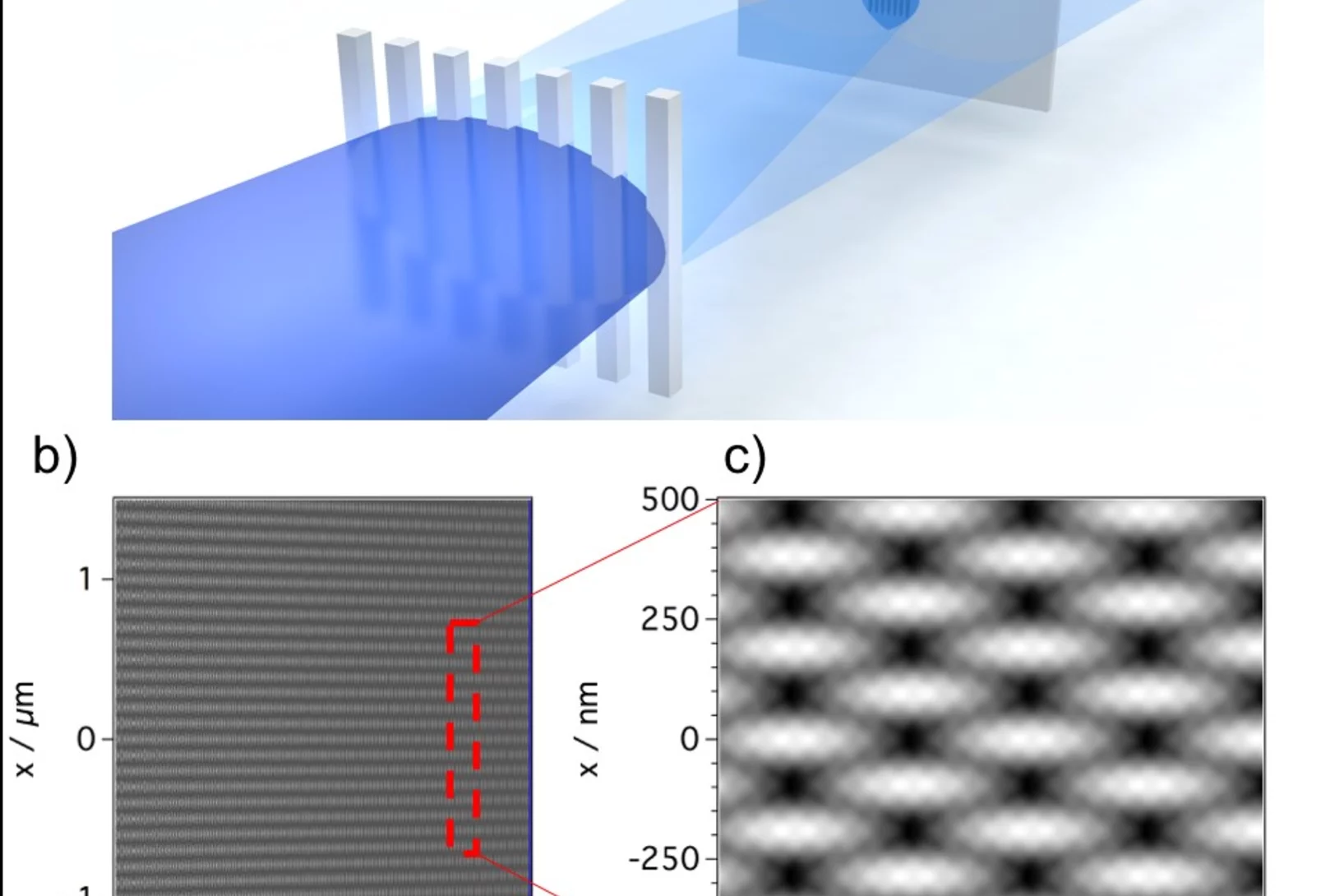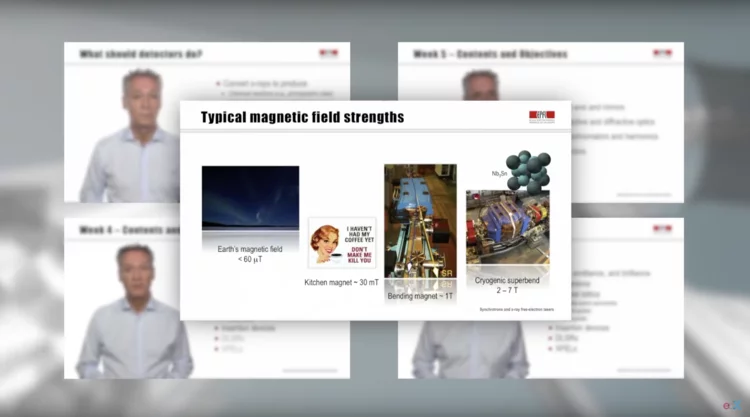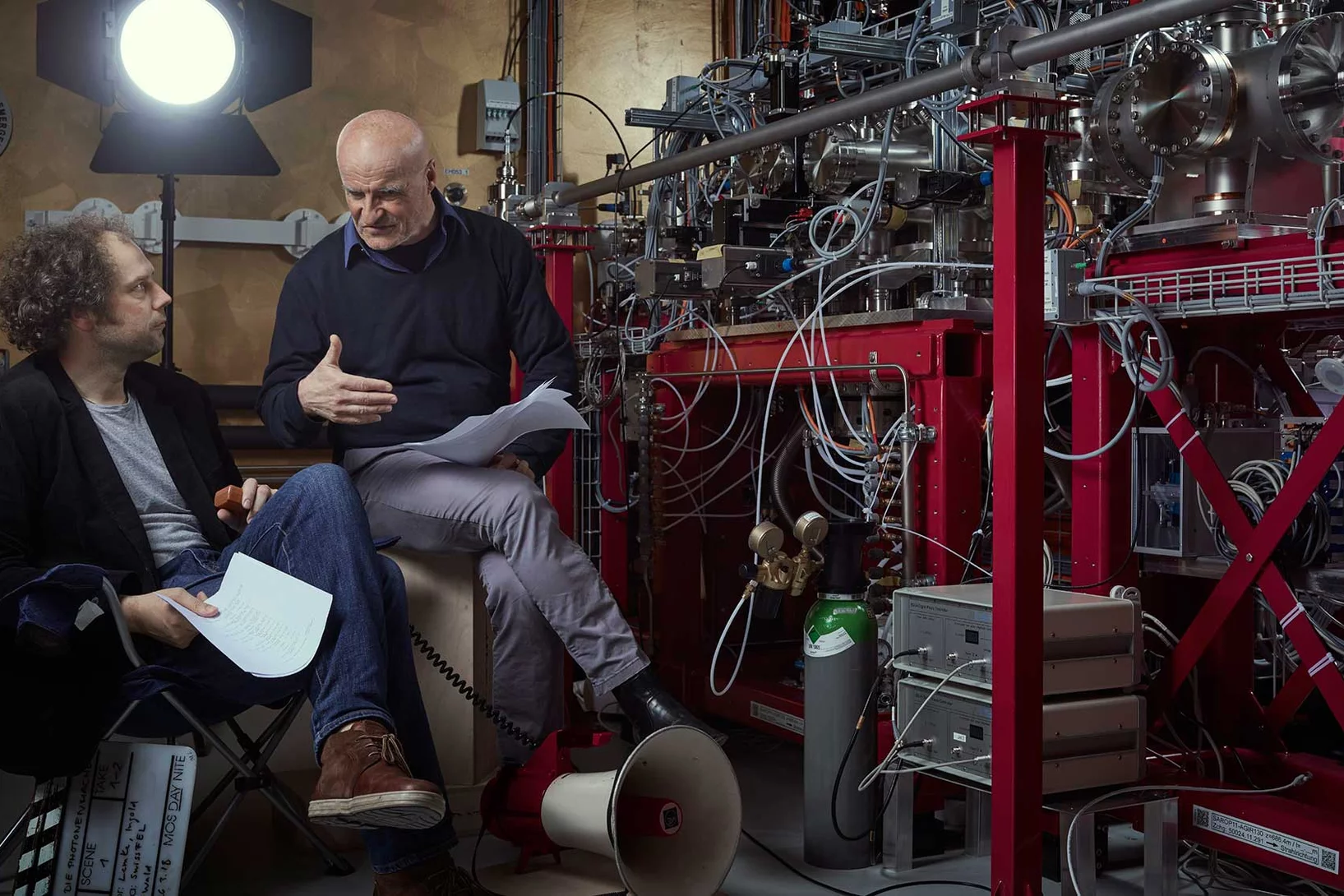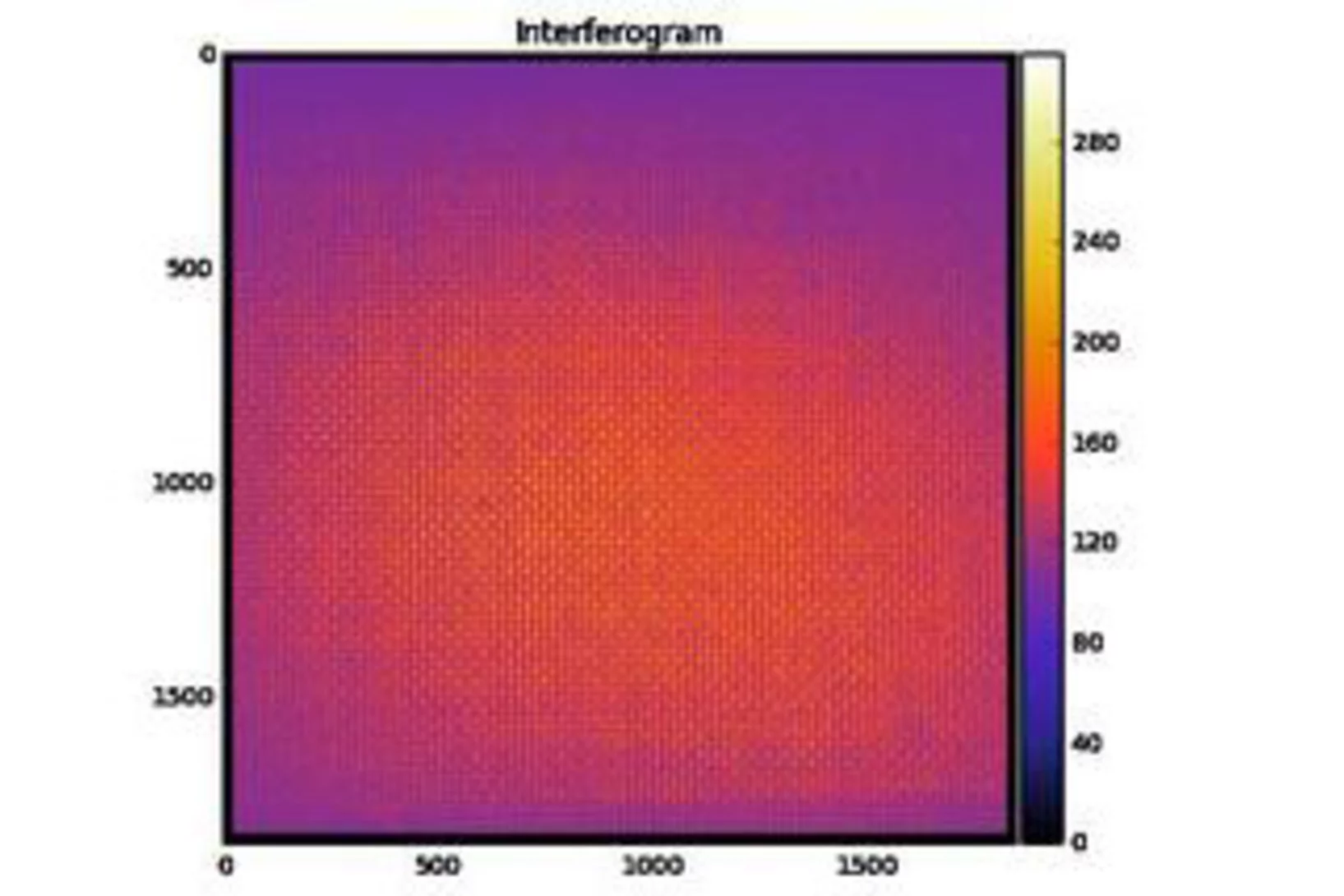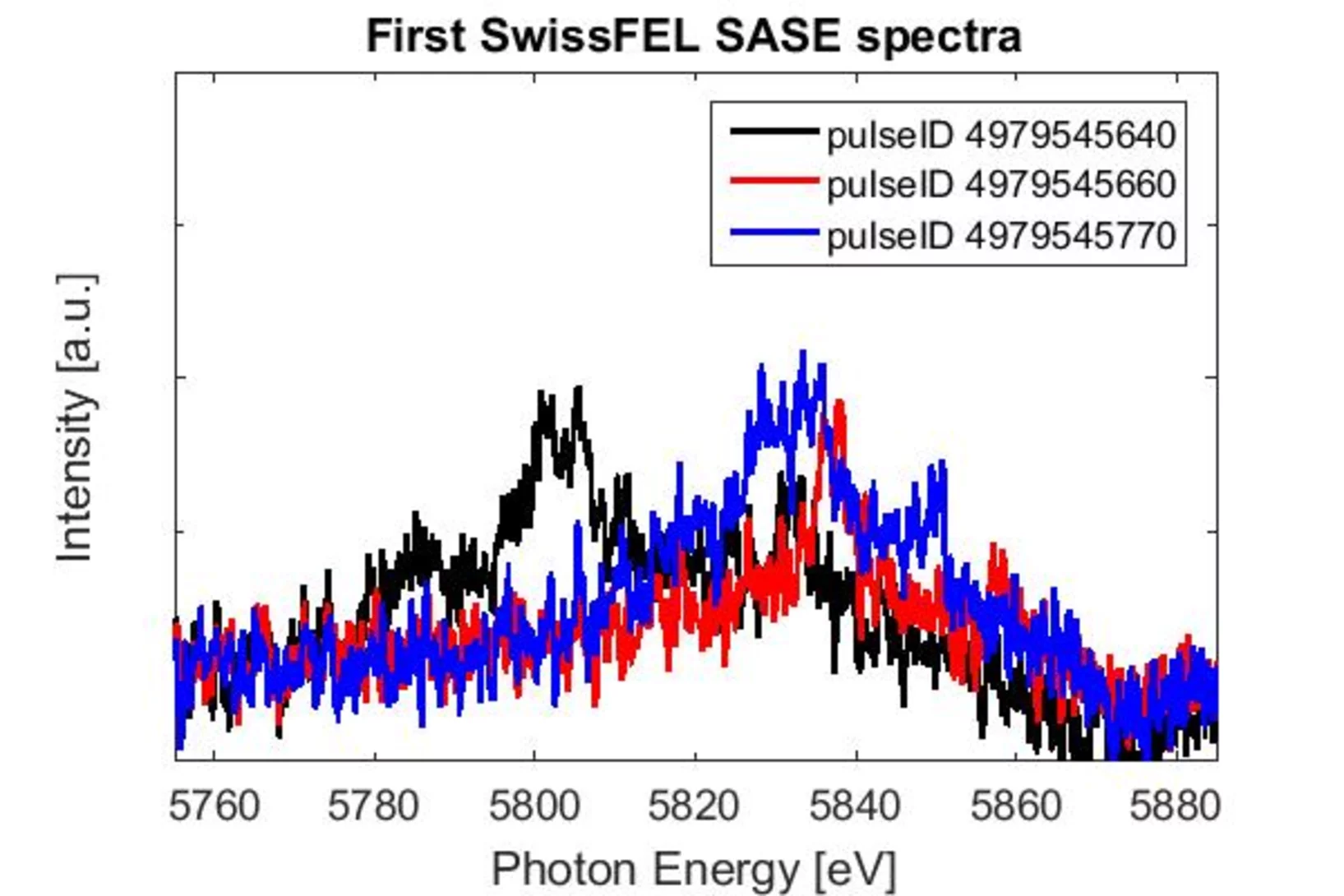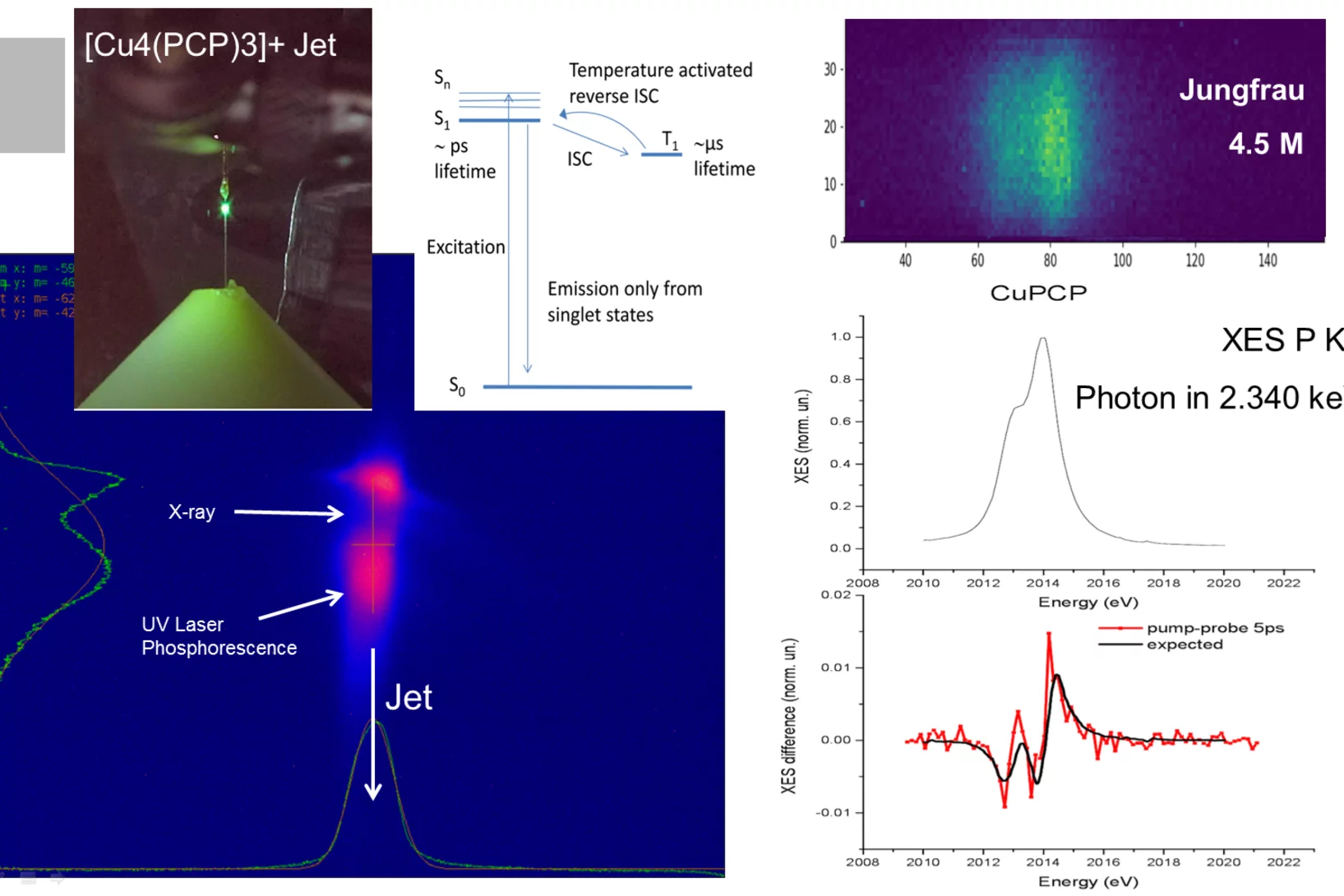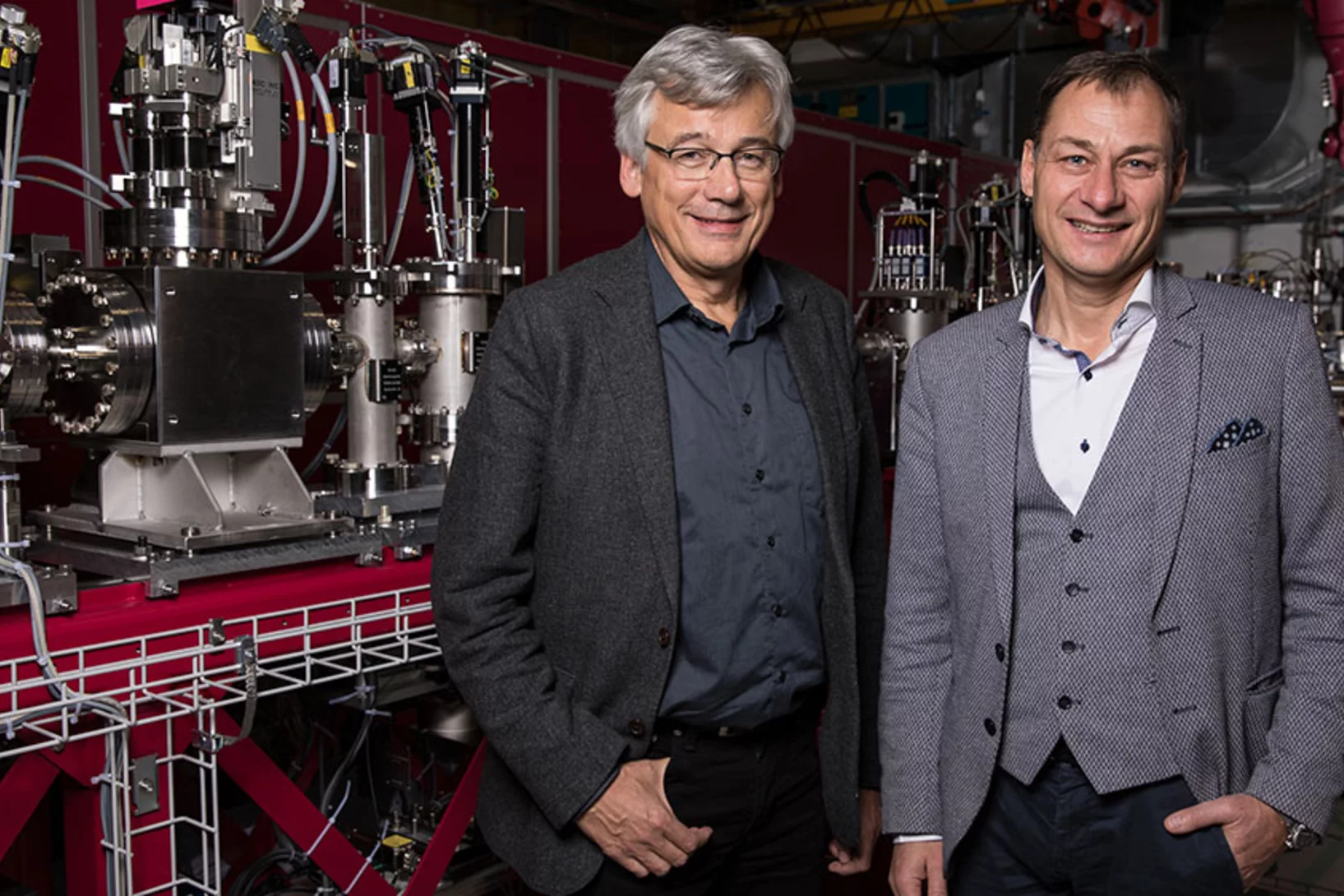Magnétisme en couches minces: un électron fait la différence
Une étape importante vers des mémoires informatiques novatrices
Phonon promoted charge density wave in topological kagome metal ScV6Sn6
Charge density wave (CDW) orders in vanadium-based kagome metals have recently received tremendous attention, yet their origin remains a topic of debate. The discovery of ScV6Sn6, a bilayer kagome metal featuring an intriguing √3 × √3 × √3 CDW order, offers a novel platform to explore the underlying mechanism behind the unconventional CDW. Here we combine ...
Weyl spin-momentum locking in a chiral topological semimetal
Spin–orbit coupling in noncentrosymmetric crystals leads to spin–momentum locking – a directional relationship between an electron’s spin angular momentum and its linear momentum. Isotropic orthogonal Rashba spin–momentum locking has been studied for decades, while its counterpart, isotropic parallel Weyl spin–momentum locking has remained elusive in experiments. Theory predicts ...
Extreme ultraviolet for scalable silicon quantum devices
Experiments at the Swiss Light Source (SLS) show the potential of extreme ultraviolet light (EUV) to make the building blocks of scalable quantum computers.
The secret life of an electromagnon
SwissFEL sheds light on how lattice and atomic spins jiggle together.
Unveiling ultra-thin electron liquids in silicon
Soft X-rays enable scientists to visualise non-invasively the electronic properties of ultra-thin dopant layers buried within semiconductor wafers.
De nouveaux matériaux pour les ordinateurs du futur
Des chercheurs identifient et étudient des compositions de matériaux dont les propriétés particulières pourraient permettre de concevoir des puces d’un genre nouveau.
Un bout d’histoire du PSI entame un long voyage
Cap sur Down Under: un composant de haute technologie du PSI a pris la mer pour servir désormais à l’Australian Synchrotron à Melbourne.
Mieux comprendre l'eau
Réalisation d’une carte de potentiel des molécules d’eau
Spin keeps electrons in line in iron-based superconductor
Electronic nematicity, thought to be an ingredient in high temperature superconductivity, is primarily spin driven in FeSe finds a study in Nature Physics.
New SwissFEL soft X-ray endstation welcomes first users
Maloja is go. First user experiments mark a double first, not only for the Maloja endstation but also for the second beamline of SwissFEL, Athos.
Hercules School 2022
PSI hosted again the Hercules School in March 2022. We had the pleasure to welcome 20 international PhD students, PostDocs and scientists to demonstrate our state-of-the-art techniques and methodologies at our large scale facilities, the Swiss Light Source (SLS), the Swiss Spallation Neutron Source (SINQ) and our free electron laser SwissFEL.
Mobile excitons as neutral information carriers
These quasiparticles have the potential to revolutionise electronics - if they can move. Mobile excitons have now been observed for the first time in a metal.
En route vers des ordinateurs quantiques plus compacts grâce à la topologie
Des chercheurs en quête de qubits particulièrement stables ont étudié en détail la distribution des électrons dans deux semi-conducteurs.
Première lumière à Furka: les expériences peuvent démarrer
La voie vers des expériences uniques au monde est libre.
Une recherche qui ne plane pas sur un nuage rose
La lumière est essentielle à la vie. Pour les chercheurs, c’est aussi un merveilleux instrument qui leur permet de mieux comprendre la structure des matériaux.
Une vision par rayons X d’une netteté unique
Un nouveau procédé du PSI permet une étude de physique quantique des matériaux au moyen de lasers à rayons X.
World Record: 7 nm Resolution in Scanning Soft X-ray Microscopy
During the past decade, scientists have put high effort to achieve sub-10 nm resolution in X-ray microscopy. Recent developments in high-resolution lithography-based diffractive optics, combined with the extreme stability and precision of the PolLux and HERMES scanning X-ray microscopes, resulted now in a so far unreached resolution of seven nanometers in scanning soft X-ray microscopy. Utilizing this highly precise microscopy technique with the X-ray magnetic circular dichroism effect, dimensionality effects in an ensemble of interacting magnetic nanoparticles can be revealed.
Two-color snapshots of ultrafast charge and spin dynamics
In a joint research effort, an international team of scientists lead by Emmanuelle Jal (Sorbonne Université) performed a time-resolved experiment at the FERMI free-electron laser to disclose the dynamic behavior of two magnetic element of a compount material in only one snapshot. The X-ray Optics and Applications group developed a dedicated optical element for this experiment that is usable with two different photon energies (colors) simultaneously.
First light in the SwissFEL Maloja endstation
The first endstation at the SwissFEL Athos soft X-ray branch is rapidly developing and on track for first experiments in 2021.
Photoelectric Effect with a Twist
In a joint research effort, an international team of scientists lead by Prof. Giovanni de Ninno (University of Nova Gorica, Elettra Sincrotrone Trieste) now demonstrated that an OAM-dependent dichroic effect can be observed on photoelectrons. The photoelectrons are released from a sample of He atoms that is excited by the strong extreme ultraviolet light pulses from the FERMI free electron laser, whereas the orbtial momentum is imprinted with an intense infrared laser pulse. The X-ray Optics and Applications group of PSI supported the team with their experience in the creation of OAM beams and during the experiments.
Transmission measurement at the Bernina branch of the Aramis Beamline of SwissFEL
An international collaboration consisting of metrology and photon diagnostics groups Germany, the U.S.A., Switzerland, and Japan performed a set of cross-calibration measurements of optical properties on the Bernina branch of the Aramis beamline [1]. The collaboration saw the DESY-developed gas detector, a novel diamond detector from Brookhaven, and a room temperature radiometer from AIST in Japan placed at the Bernina end station and measure the absolute intensity of the FEL light as it passed through the optical elements. The cross-calibrated measurements used in conjuction with the photon beam intensity-gas (PBIG) monitor at the front end of the Aramis beamline to characterize the performance of the optical components on the Bernina branch and then compare them to the expected theoretical values. The measurements were performed at photon energies of 6.08 and about 7.22 keV.
Towards X-ray Transient Grating Spectroscopy at SwissFEL
The high brilliance of new X-ray sources such as X-ray Free Electron Laser opens the way to non-linear spectroscopies. These techniques can probe ultrafast matter dynamics that would otherwise be inaccessible. One of these techniques, Transient Grating, involves the creation of a transient excitation grating by crossing X-ray beams on the sample. Scientists at PSI have realized a demonstration of such crossing by using an innovative approach well suited for the hard X-ray regime.
MOOCs – a paradigm shift in education
In March 2018, the nine-week MOOC “Introduction to synchrotrons and x-ray free-electron lasers” (abbreviated to “SYNCHROTRONx”) came online via the edX provider of the École Polytechnique Fédérale de Lausanne (EPFL), created by Phil Willmott of the Swiss Light Source, Paul Scherrer Institute. “MOOC” is an acronym for “massive open online course”, a teaching platform started in the first decade of this century, which has become increasingly popular in the last five to six years. MOOCs have no limits to participation and are free. Some of the most popular MOOCs can attract many tens of thousands of participants. Even the most specialized subjects may have an initial enrollment of over a thousand, more than an order of magnitude larger than that typically found in traditional higher education. There were over 70 million MOOC enrollments covering nearly 10’000 subjects offered by the top five providers in 2017 alone!
Metteurs en scène avec missions additionnelles
Par rapport aux modèles actuels, les mémoires informatiques fabriquées à partir de certains matériaux novateurs devraient permettre d'enregistrer les informations beaucoup plus rapidement et dans un espace plus restreint, en consommant nettement moins d'énergie. Les séquences filmées au moyen du laser à rayons X montrent ce qui se passe au cœur de ces mémoires informatiques potentielles et comment optimiser les processus au cours desquels le matériau commute entre deux états.
Hollywood en forêt de Würenlingen
Les chercheurs du PSI veulent utiliser le laser à rayons X SwissFEL pour réaliser des films qui présenteront des biomolécules en action. Ces productions montreront comment fonctionne notre œil ou quel est le mode d’action de nouveaux médicaments.
A first glance at the SwissFEL x-rays wave-front
X-ray Free Electron Lasers (XFELs) combine the properties of synchrotron radiation (short wavelengths) and laser radiation (high lateral coherence, ultrashort pulse durations). These outstanding machines allow to study ultra-fast phenomena at an atomic level with unprecedented temporal resolution for answering the most intriguing open questions in biology, chemistry and physics.
First Single-Shot SASE spectra of SwissFEL successfully measured
The team of the Laboratory for Advanced Photonics (LAP) has succeeded to perform the first set of shot-to-shot measurements of the SwissFEL generated spectrum.
First Pilot Experiment at SwissFEL-Alvra: UV photo-induced charge transfer in OLED system
On the 17th of December 2017 SwissFEL saw its first pilot experiment in the Alvra experimental station of the SwissFEL ARAMIS beamline.
La première expérience conduite au SwissFEL a été un succès
Les méticuleuses années de planification et de construction ont porté leurs fruits: la première expérience conduite à la nouvelle grande installation de recherche de l’Institut Paul Scherrer PSI, le laser à rayons X à électrons libres SwissFEL, a été un succès. Ce faisant, deux objectifs ont été atteints: d’un côté l’obtention d’un nouveau résultat scientifique, de l’autre une optimisation de l’interaction entre les nombreux composants de cette installation extrêmement complexe.
